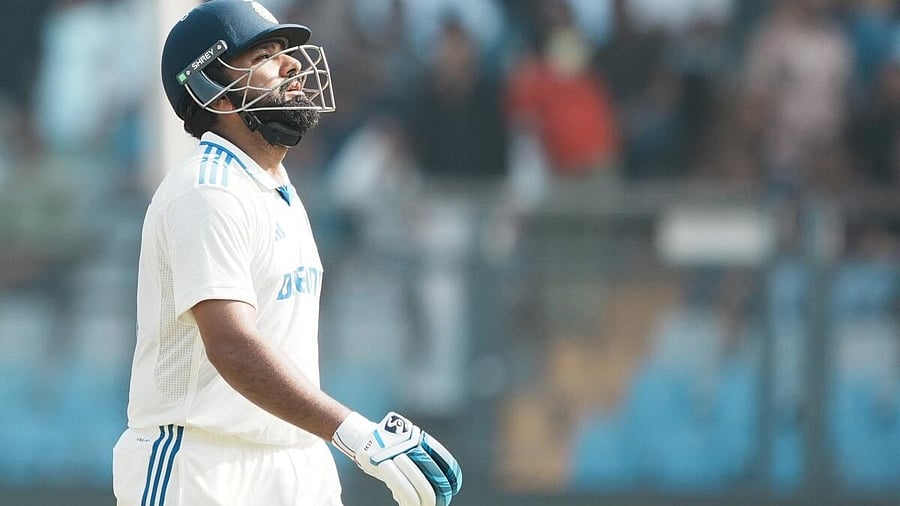
Rohit Sharma.
Credit: Reuters File Photo
Sydney: What if Jasprit Bumrah were to be fit on what turned out to be the final day of the latest edition of the Border-Gavaskar Trophy series? The world’s best fast bowler was absent on the decisive day of the final Test at the Sydney Cricket Ground (SCG), leaving India’s bowling attack significantly weakened. Australia comfortably chased down a below-par target of 162, securing a six-wicket win on the third day.
The lack of official communication about the nature and severity of Bumrah’s injury -- a supposed back issue -- has only fueled speculation. This opacity is ingrained in Indian cricket administration, often leaving fans and analysts in the dark. Transparency, it seems, is an ongoing challenge, but that’s a topic for another day.
Coming back to the beginning of this piece, Bumrah’s presence could have altered the course of the series and reshaped the narrative. A victory in Sydney would have reduced the sting of the series scoreline and shifted the focus of the post-mortem of India’s performance.
Instead of dwelling on veterans’ prolonged poor form, Bumrah’s brilliance might have dominated headlines. The spotlight on younger batters’ away performances might have dimmed, and the coaching staff would have avoided the harsh scrutiny they now face.
Were India as poor as the eventual series scoreline (3-1) suggests? Definitely not. But then, as head coach Gautam Gambhir has professed on more than one occasion, sport is all about results, and in its absence, hard questions will be asked and accountability will be demanded because, as Gambhir himself said after the final Test, these issues pertain to the “country’s team.”
India’s downfall in the series can largely be attributed to inconsistent batting performances and questionable strategies. With the exception of Yashasvi Jaiswal, who was on his maiden tour of Australia, KL Rahul in the top order, and Nitish Reddy, another Test debutant, most Indian batters struggled to find consistency. This inconsistency frequently left the bowlers under immense pressure, especially due to underwhelming first-innings totals.
While Virat Kohli managed a second-innings century in Perth, his contributions afterwards were minimal. Similarly, Rohit Sharma failed to make any impact with the bat. Rahul, as has been his wont, faded as the series progressed. His lack of runs in the last two Tests was exacerbated by changes to his batting position. Rishabh Pant demonstrated sharp game awareness in the final Test, but his performance came too late to make a meaningful difference.
Shubman Gill, despite his impressive record in India and the West Indies, continued to struggle in South Africa, England, and Australia (SEA), with New Zealand yet to be tested. Labelling him a flat-track bully will be harsh, but his inability to convert starts remains a pressing concern. This issue likely stems from both technical and mental challenges.
Gill’s poor overseas record is highlighted by his disappointing numbers since his debut in 2020. He has scored just 514 runs in 21 innings at an average of 25.7 outside Asia and the West Indies. Notably, 259 of these runs came in his first six innings during the 2020-21 Australia series. Since his heroic 91 in the Brisbane Test of January 2021, his highest score in SEA countries is a mere 36 across 15 innings.
These statistics are both unavoidable and revealing. Gambhir did not hold back in criticising India’s batting shortcomings, particularly the inability to post competitive first-innings totals, which left the bowlers shouldering an immense burden not just against Australia but in the home series against New Zealand as well.
“Probably two of them in the top eight, Nitish and Yashasvi (hadn’t played in Australia before), (but) all the other guys have had the experience of Australia,” Gambhir noted. “So I’m not going to say that it is only because of some of the young guys, but I think there are a lot of experienced players as well. A bit (reason for lack of runs) could be because of the wickets, when again it’s not only the case in Australia, we’ve had the same issues at home as well (against New Zealand).”
A gritty opener during his time, Gambhir overcame his technical inadequacies through sheer fortitude, and he felt that it all boiled down to how one negotiated tough moments and broke down sessions.
“I think everything boils down to temperament,” he offered. “Everything boils down to how much you want to sometimes play those tough moments, how much you want to grind in Test cricket, because Test cricket is all about playing the sessions; sometimes see off the spell as well. So, I feel that that is one issue where we need to probably look after how we can convert those 20s, 30s or 40s into big hundreds -- not only hundreds but big hundreds and set the game for our bowlers because your bowling department will always be under pressure if you can’t put those first innings runs on the board.”
India were bowled out for under 200 in the first innings on three occasions during this series. Although they secured a victory in Perth, where Australia’s first-innings performance was even worse, they couldn’t escape similar troubles elsewhere.